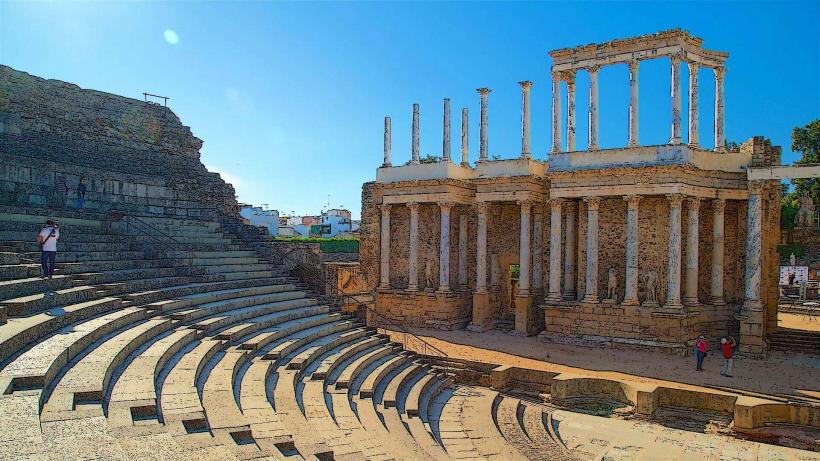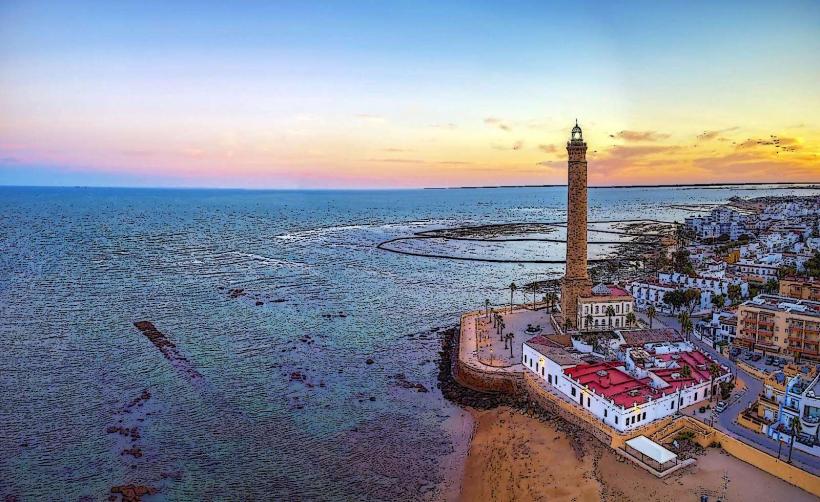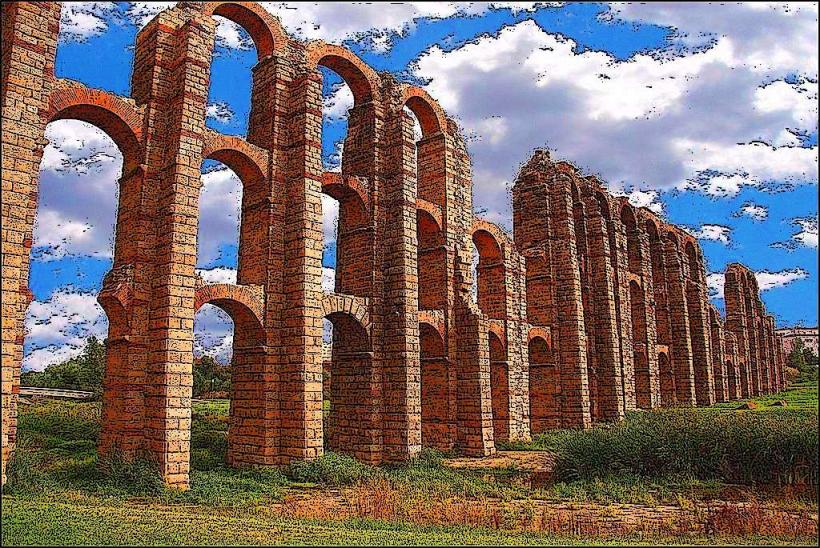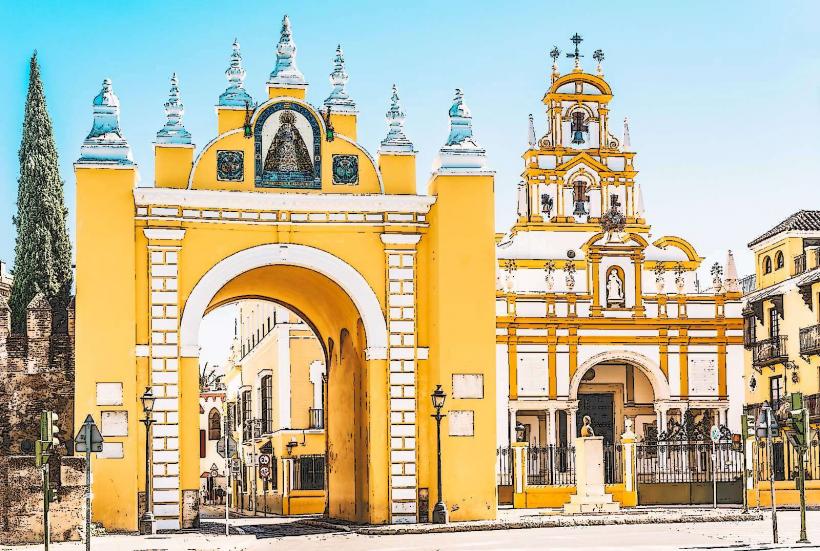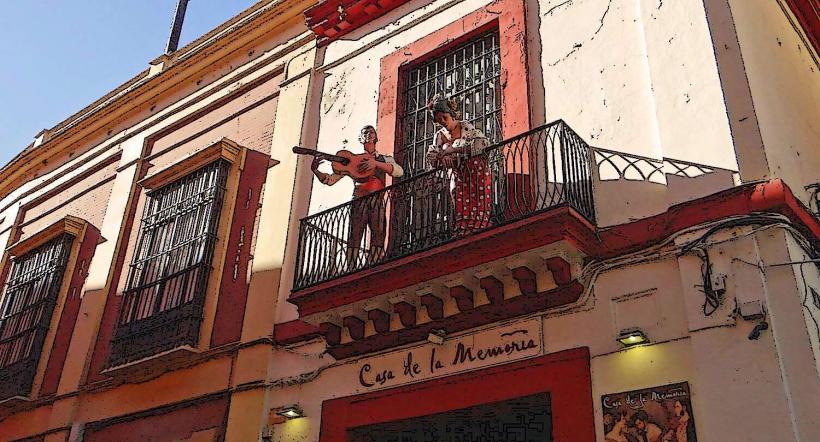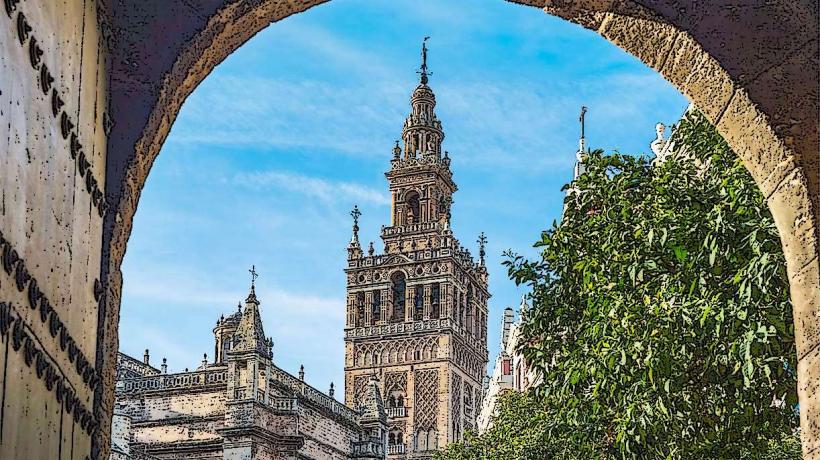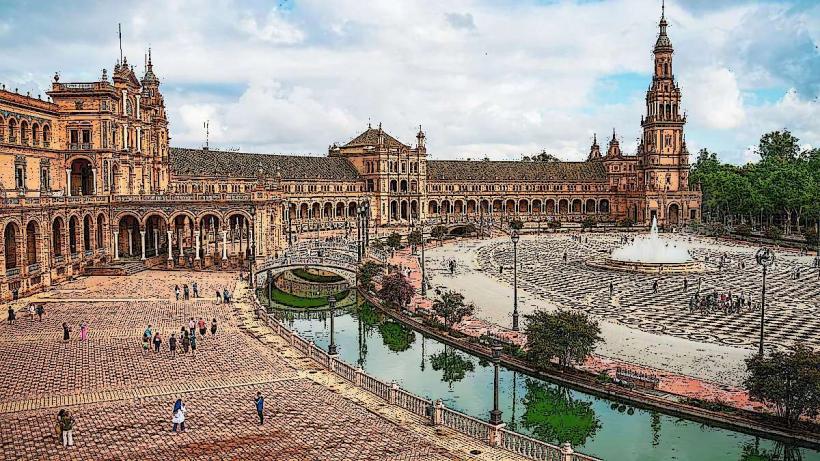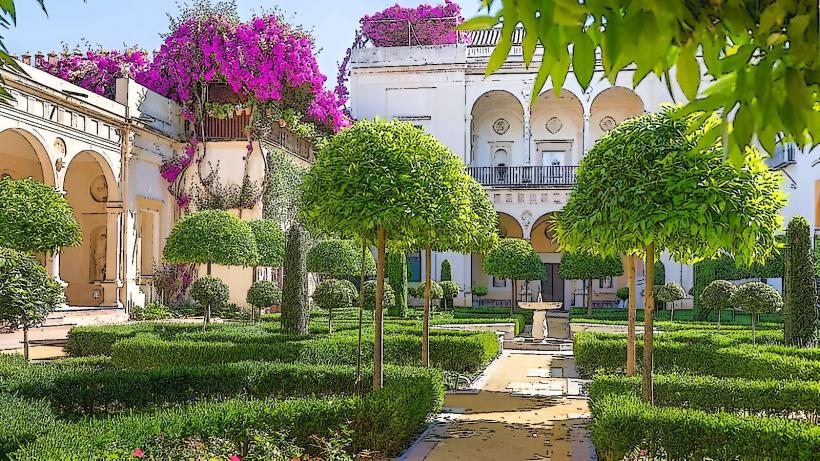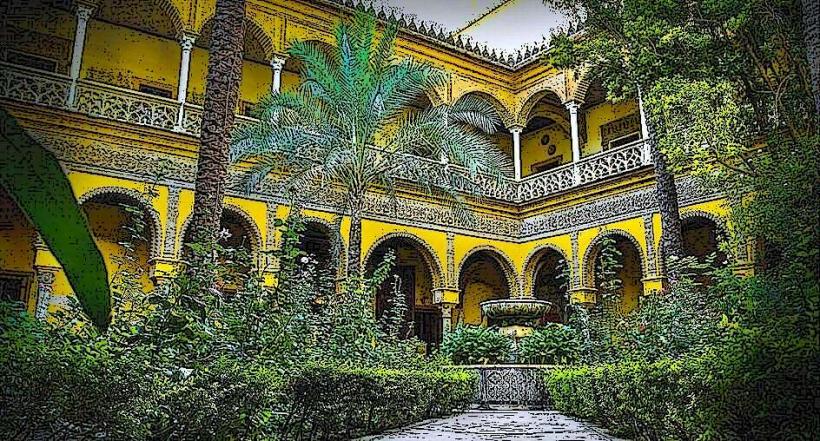Information
Landmark: Parque de Maria LuisaCity: Seville
Country: Spain
Continent: Europe
Parque de María Luisa is one of the most beautiful and historic parks in Seville, Spain. Located along the Guadalquivir River, it is a lush, green oasis in the heart of the city, offering a peaceful escape from the urban bustle. The park is especially popular among locals and tourists alike for its scenic beauty, architectural features, and historical significance.
Historical Background
Origins: The park’s history dates back to the 16th century, when it was originally part of the Palacio de San Telmo, the residence of the Duke of Montpensier. It was initially designed as a private garden for the nobility. The land was later inherited by the Spanish royal family.
Public Access: In 1893, the park was donated to the city of Seville by Infanta María Luisa Fernanda de Borbón, the daughter of the Spanish king Fernando VII. After the donation, the park was opened to the public and has since become one of the city’s most beloved green spaces.
Design: The park’s layout was influenced by the prevailing Romantic style of the late 19th century. It was designed by the French landscape architect Jean-Claude Nicolas Forestier, with input from local architects and artists. Over the years, the park has been expanded and renovated, and it now covers approximately 34 hectares (84 acres).
Key Features and Attractions
Beautiful Gardens:
- The park is divided into a series of lush gardens, each with its own distinct character. The garden areas are filled with fountains, pools, and manicured lawns, creating a serene atmosphere.
- Flowerbeds of colorful flowers, including roses and lilies, add vibrant splashes of color throughout the park. The park is especially beautiful in spring when the flowers are in full bloom.
Fountains and Ponds:
- One of the most remarkable features of Parque de María Luisa is its numerous fountains and ponds, which add to the peaceful ambiance. Notable among these is the Fountain of the Lions and the Fountain of Mercury, which are located near the park’s main entrance.
- There are also a series of small, picturesque ponds scattered throughout the park, often adorned with swans and ducks. These water features provide a relaxing atmosphere and a perfect place for visitors to unwind.
Monuments and Statues:
- Parque de María Luisa is home to several statues and monuments, many of which have historical significance. The park’s statues include a mix of classical and romantic figures, such as Don Juan Tenorio and the poet Gustavo Adolfo Bécquer.
- Monuments like the Monument to Antonio de Nebrija and the Monument to La Argentina can also be found in the park. These statues and monuments add to the park’s historical charm and reflect Seville’s cultural legacy.
Mudejar Pavilion:
- Located in the park is the Mudejar Pavilion (Pabellón Mudejar), which is a stunning example of Mudejar architecture. The pavilion was built for the Ibero-American Exposition of 1929 and is known for its intricate tilework, brickwork, and arches. The pavilion is used for temporary exhibitions and cultural events.
Plaza de España:
- Within the park, the famous Plaza de España is a must-see landmark. This monumental square was built for the Ibero-American Exposition of 1929 and is one of Seville’s most iconic architectural gems. The canal and ceramic tiles of Plaza de España are located right next to the park, providing a seamless connection between the two spaces.
Tree-lined Paths:
- The park features a network of tree-lined avenues that offer shaded pathways perfect for strolling, jogging, or cycling. The park is home to many mature trees, including palms, cypresses, and magnolias, which provide cool shade during the hot summer months.
- The winding paths allow visitors to explore the park’s different areas and discover hidden corners filled with fountains and statues.
Boating:
- The park also has a canal that flows through the Plaza de España area, and visitors can rent rowboats for a relaxing experience on the water. Boating in the canal provides a different perspective of the park and its surroundings, including the striking architecture of Plaza de España.
Floral Displays:
- Throughout the year, the park’s flowerbeds undergo seasonal changes, with special displays for events such as the April Fair (Feria de Abril) and Easter Week (Semana Santa). The rose garden and lily ponds are particularly popular during the spring months.
Birdlife:
- Parque de María Luisa is home to a wide variety of bird species, making it a favorite spot for birdwatchers. You can see ducks, swans, pigeons, and other local birdlife in the park’s ponds and gardens. The park’s large trees also provide homes for smaller birds, and the tranquil atmosphere makes it an ideal place for observing wildlife.
Nearby Attractions
- Seville’s Historical Center: Parque de María Luisa is located close to many of Seville’s key historical and cultural landmarks. Within walking distance, you can explore the Seville Cathedral, Alcázar of Seville, and the Giralda Tower.
- Plaza de España: As mentioned earlier, Plaza de España is part of the park’s layout and one of Seville’s most famous landmarks. The combination of the park’s natural beauty with the grandeur of Plaza de España makes this area one of the most stunning parts of the city.
- Museums and Galleries: The Archaeological Museum of Seville and the Museum of Arts and Traditions are located near the park, offering more opportunities to explore Seville’s cultural heritage.
Visiting Parque de María Luisa
Opening Hours: Parque de María Luisa is open to the public every day of the week. The park is accessible 24 hours a day, though it is typically visited during the day when it is at its most vibrant. The entrance gates are open from 7:30 AM until 10:00 PM, but the gates may close earlier in the winter months.
Entrance: The park is free to enter, and visitors can enjoy its beauty without an entrance fee. However, some attractions within the park, such as the Mudejar Pavilion or specific exhibitions, may require an admission fee.
Getting There: Parque de María Luisa is centrally located, making it easily accessible on foot, by bike, or via public transportation (such as buses or trams). It’s just a short walk from major landmarks like Seville Cathedral and the Plaza de España.
Facilities: The park has benches, picnic areas, and cafés, where visitors can relax and enjoy the surroundings. There are also playgrounds for children, making it a family-friendly location.
Conclusion
Parque de María Luisa is one of Seville’s finest public spaces, offering a perfect blend of natural beauty, historical significance, and architectural charm. Whether you’re looking for a peaceful place to relax, a place to enjoy the beauty of nature, or a space to discover Seville’s cultural heritage, this park is an ideal destination. With its lush gardens, picturesque fountains, monumental architecture, and tranquil atmosphere, Parque de María Luisa is an unmissable part of Seville’s charm.

